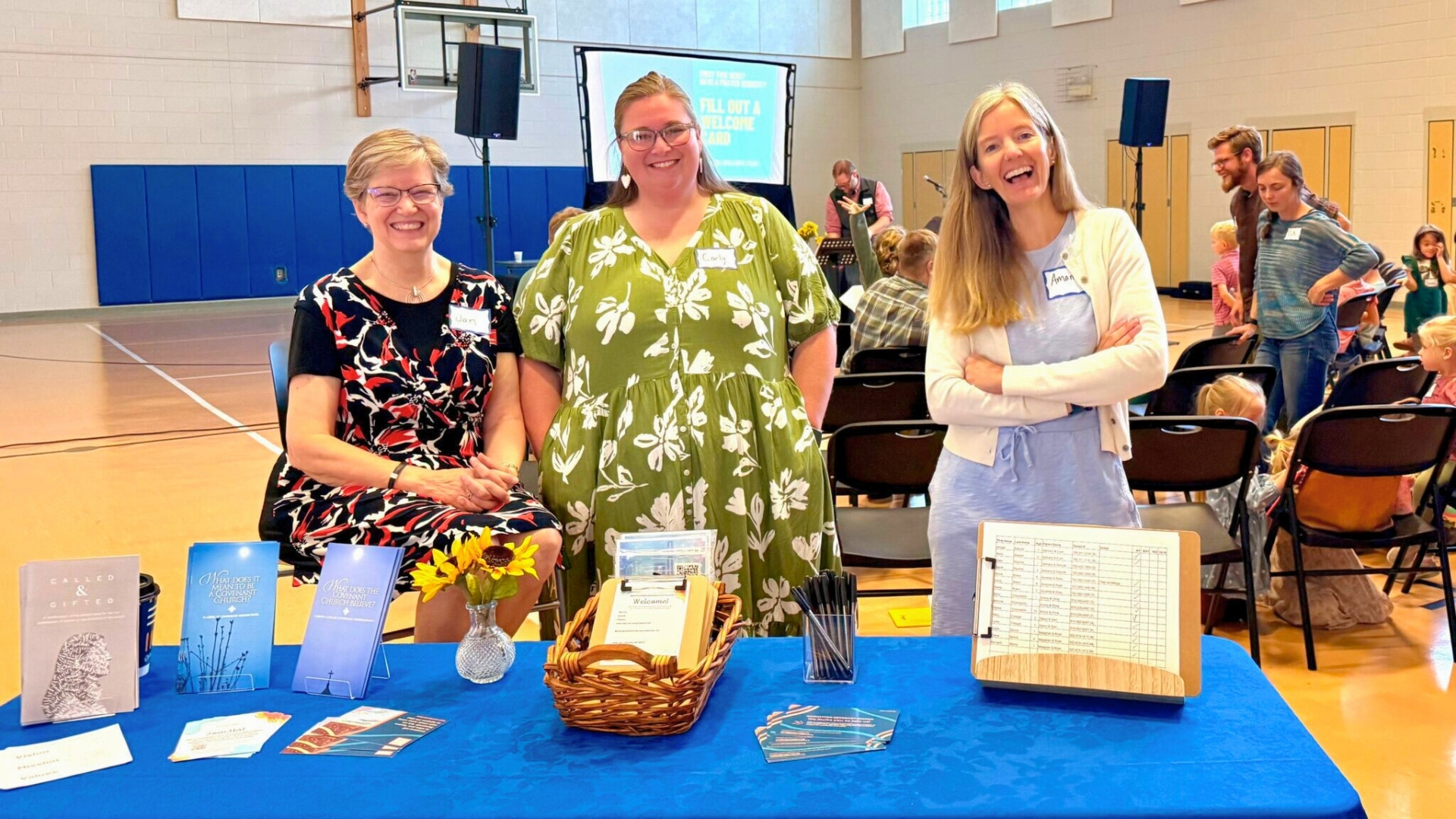How to Invite the Full Person to Be Fully in Person
The Covid-19 pandemic provided many North American churches with a crash course in technical innovation. What we learned about creating hybrid worship options continues to serve congregations today. For me and other people on the “sick and shut-in” list, many of whom have chronic illnesses and disabilities, it was the first time in a long time we could be more fully engaged with our congregation in real-time. Unfortunately, we’re still struggling to care well for the people with disabilities who are in our pews—both in-person and virtually.
In 2020, as churches were trying to figure out ways to safely do in-person worship, many congregations opted for outdoor worship services. When I chimed in on a few discussion threads to explain why that would still be problematic, I started to see a phrase that still makes me clench my teeth: “If you’re sick, elderly, or immunocompromised, just stay home.”
I finally posted this on Facebook: “When you host an outdoor worship service (or any other social event) without access to restrooms, know that your event is still not fully accessible. I’m concerned that this next phase for the church is going to inadvertently (or blatantly) exclude those with various disabilities. Every time I hear ‘Well, if you’re sick, elderly, or immunocompromised, just stay home,’ I cringe. If gathering together is ‘so important’ to the Church, are we not part of the Church? One good thing about this pandemic is the ways in which the usually ‘sick and shut-in’ were able to more fully engage with their congregational/temple/mosque life. ‘Moving forward’ is only successful/effective/good if we do it in a way that doesn’t leave them (us) behind. Don’t make lazy decisions.”
I have Crohn’s disease, an autoimmune and inflammatory bowel disease. That diagnosis marks me as immunocompromised. I’m also immunosuppressed because of my current treatment plan. Crohn’s is both a chronic illness and a disability, and some of its symptoms cause other disabilities.
For all my life, living with Crohn’s has felt like having a tire with a slow leak. The older I get, the more I feel the effects of both Crohn’s and aging. I’m tired almost all the time, and pain is a constant companion. It took me almost four months to write the first 1,000 words of this article. That boils down to about 10 words a day. Except most of those days, instead of writing, I was too fatigued or in too much pain, or both, to write.
According to a 2021 CDC report, 27 percent of Americans (61 million) have a disability. Of that number, 10 percent have invisible illnesses. That means they don’t use visible supports like a wheelchair or cane, so people often assume they aren’t disabled. The laundry list of symptoms that come with invisible disabilities includes chronic/debilitating fatigue, pain, cognitive dysfunctions, and more. Many of us with chronic illnesses describe our lived experience using the “Spoon Theory” created by writer Christine Miserandino, who coined the term to describe her experience living with lupus. In a nutshell, healthy people have access to a limitless number of “spoons,” or resources, to get through each day. In contrast, we who live with chronic illness go through life with a finite amount of physical and mental energy, or spoons. Each day, we must make difficult choices about how to live without running out of spoons. And “simple” tasks like showering, getting dressed, or preparing a meal cost us spoons.
I have missed major events such as a leadership team retreat, our very first church picnic, and a church anniversary service because of my health. In the days afterward, I’d see social media posts with photos from the event, but I was nowhere to be found. People could look at these events from the life of my church and not know that I was ever a part of that community.
A few months ago, I missed a significant life event because I was caring for a sick family member and dealing with my own health challenges. (There’s a whole other conversation to be had about doing ministry while “sandwich generationing.”) As I saw friends’ Facebook posts, I couldn’t help but wonder, “Do they even notice I’m not there?” It feels like FOMO (the fear of missing out) on steroids, which has been exacerbated since Covid-19 lockdowns began nearly four years ago.
Even though I serve on the ministerial team of my church, my church attendance has been atrocious these last few years. When we first returned to in-person worship services, it was too risky for me to be around so many people. Once it felt okay for me to return to in-person worship services, I attended when my health allowed me to. Unfortunately, “when my health allowed me to” was very inconsistent. I felt guilty for not carrying my share of the workload with my ministry colleagues.
So I’m sharing a few suggestions for ways your congregation can create an environment in which the chronically ill and disabled can feel seen and known. I know that church budgets and human resources vary, so I’m not asking every church to invest thousands of dollars—but consider taking one step closer to being an accessible congregation.
- Whenever possible, provide sound amplification (a microphone) for meetings, services, and programs. When speaking in front of a group, if a microphone is available, please don’t push it away and say, “Oh, I don’t need that, I’ve got a big mouth.” Assuming you can project your voice better than a microphone dismisses the possible needs of those persons in the audience who may be hearing impaired.
- Consider providing accommodations for demographics that aren’t yet a part of your congregation because that’s just what might draw them in. For example, if your church already provides a sign language interpreter, someone who is deaf or hard of hearing is more likely to visit. Along those same lines, consider adding captions to any virtual services or videos that you produce.
- If you don’t have hymnals or you’re using songs that aren’t in a hymnal, be sure to provide song sheets or projected slides with clearly legible lyrics.
- Consider appointing a “digital pastor” who can host/moderate your virtual space. Otherwise, the virtual attendees may feel like they’re just attending another workshop instead of actively engaging in the life of your congregation. If you don’t regularly provide a virtual worship service option, make this a part of your weekly rhythms.
- As a general practice, provide ADA accessibility (such as ramps, elevators, lifts) for people with mobility issues. Don’t assume that no one has mobility issues just because you don’t see attendees using mobility assistive devices. When my arthritis or sciatica is flaring up, I tend to grin and bear it without assistive devices.
- If you are a well-resourced congregation who have implemented changes like these, good for you! Perhaps you could consider providing financial support to under-resourced congregations who need to implement similar changes.














